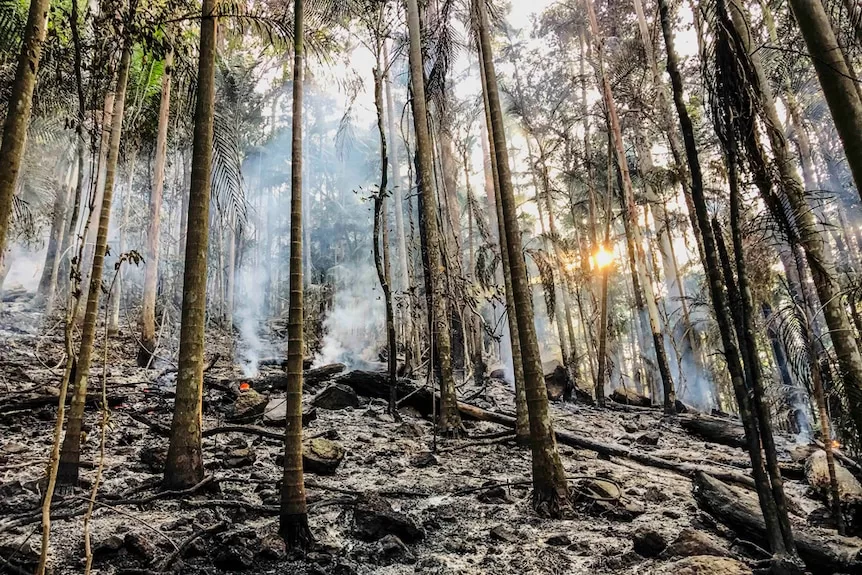- In short: The Science Saving Rainforests project has acquired land in northern NSW for its living seed bank.
- The plantation will feature stands of 60 types of rainforest trees selected for their resilience and genetic diversity.
- What’s next? Cuttings are being taken and propagated to plant across the 15-hectare site in about 12 months.
A groundbreaking project to help rainforests meet the challenges of climate change is beginning in northern New South Wales.
The Science Saving Rainforests project has collected more than 10,000 leaves from 60 plant species from Far North Queensland to southern New South Wales as it aims to increase the genetic diversity of rainforests.
In the same way zoos breed animals from other sites to reduce health risks, diversifying the genetics of plants makes them more resilient to disease, pests and climate change.
Evolutionary ecologist Robert Kooyman said genetic diversity within plant species was vital in order for plants to adapt and survive.
The threat of climate change is real for rainforests, which rely on high annual rainfall and warm temperatures.
During the damaging fire season of 2019 and 2020, remnants of the vast rainforest known as the Big Scrub that once covered the Northern Rivers region burnt for the first time.
Ancient and endangered trees including the Nightcap Oak were pushed even closer to the brink of extinction.
Hotting up
The Big Scrub once covered 75,000 hectares in the Byron Bay hinterland.
Today, less than 1 per cent remains, with intact pockets scattered around the region.
Seven years ago, Big Scrub Rainforest Conservancy co-founder Tony Parkes had a light bulb moment about how to help those remnants adapt to hotter temperatures.
His idea was to tap into the genetics of trees from similar ecosystems already experiencing these temperatures.
“That’s the thesis — it’s not rocket science but it’s a bit of ecological science,” Dr Parkes said.
The massive leaf collection project began.
Some of the leaves were taken from trees in rainforests between Noosa and Gympie, which can tolerate temperatures that are expected to be prevailing in northern New South Wales in the year 2070.
The genome of each sample was tested to find the greatest genetic diversity.
The project moved into top gear this week with Big Scrub Rainforest Conservancy taking possession of a 37ha rural property at McLeans Ridges near Lismore.
Meanwhile, cuttings from the selected trees are being raised to be ready for planting in the spring of 2025.
Within a decade, the cow paddock will be transformed into a plantation featuring stands of the 60 selected species.
Raising a rainforest
In theory, the seeds produced by these trees will be hardy and able to tolerate higher temperatures.
The plan is to grow and distribute plants from the seeds for use in future rainforest regeneration projects.
“We’ve been working at this for seven years now so having this property is just beyond my wildest dreams,” Dr Parkes said.
Rainforest nursery owner and president of Big Scrub Rainforest Conservancy Mark Dunphy said propagating the cuttings was a challenging process.
“Trying to get these cuttings to strike is not easy because these are all wild plants,” Mr Dunphy said.
He said some cuttings were already in pots, but the process would begin in earnest in spring when more cuttings could be taken and propagated in warmer weather.
Global significance
Dr Kooyman said the project would be relevant to rainforests across the globe as they faced similar challenges from climate change and land clearing.
“The future is going to unleash a few surprises,” he said.
“It informs our deeper understanding of how genetic diversity is expressed across the landscape … so we can plan for the future.”
Get our local newsletter, delivered free each Friday
